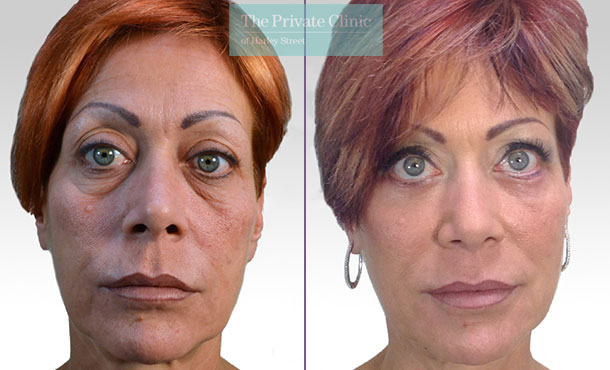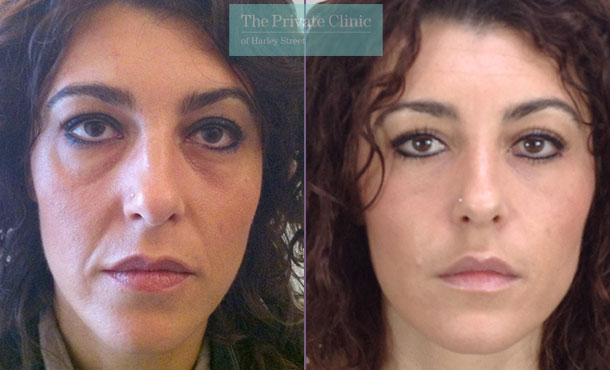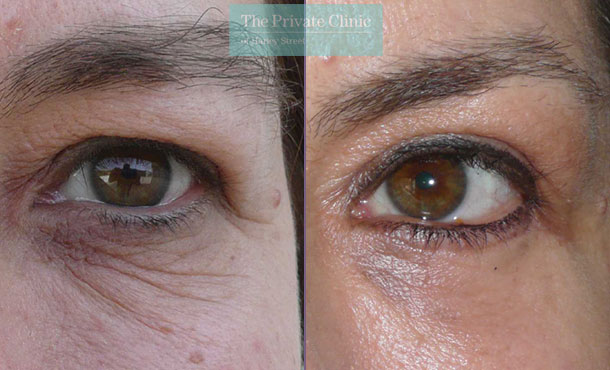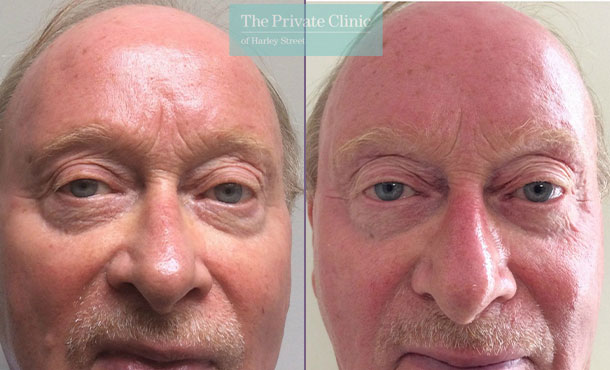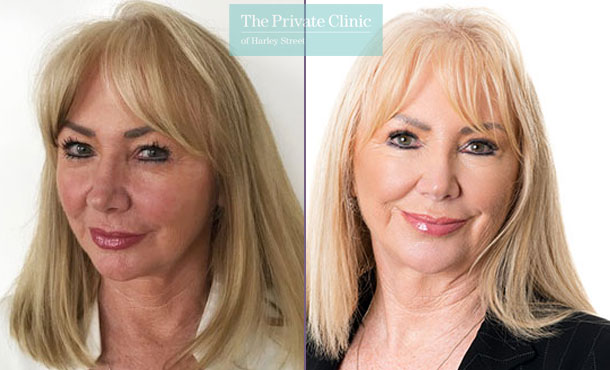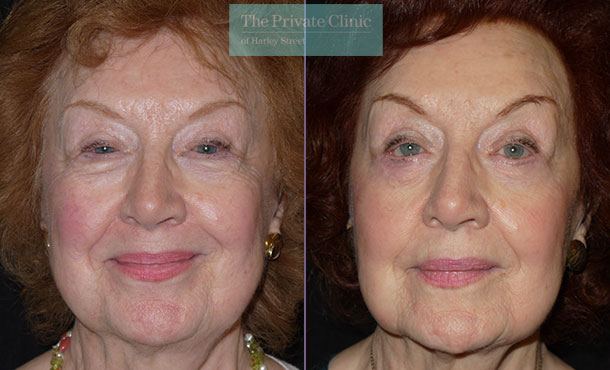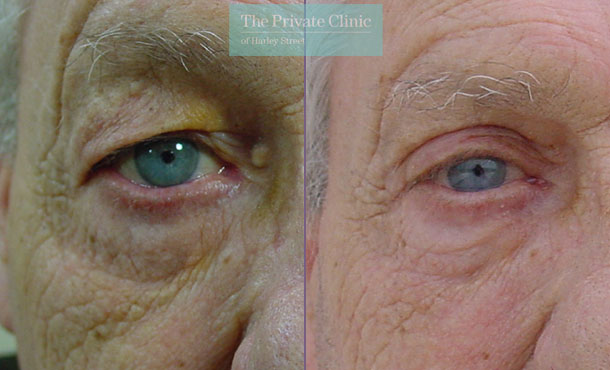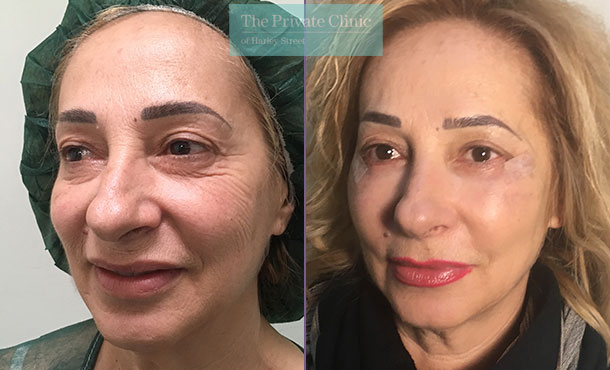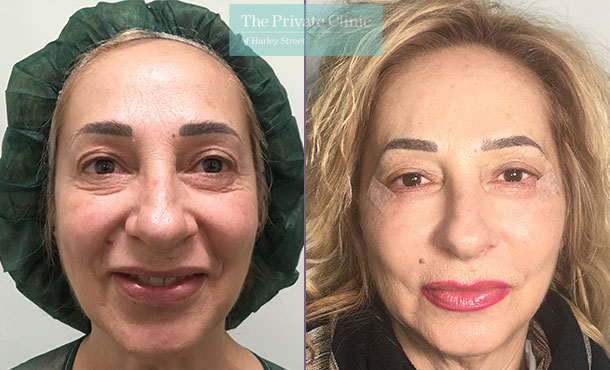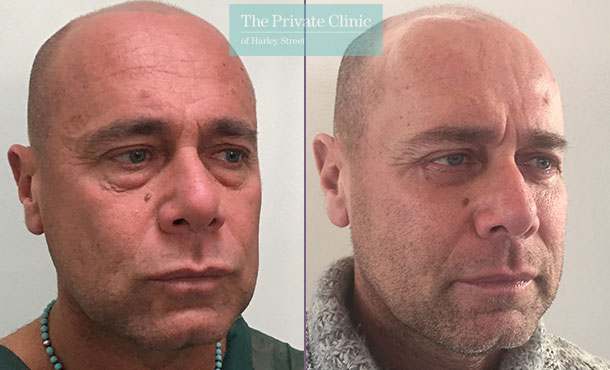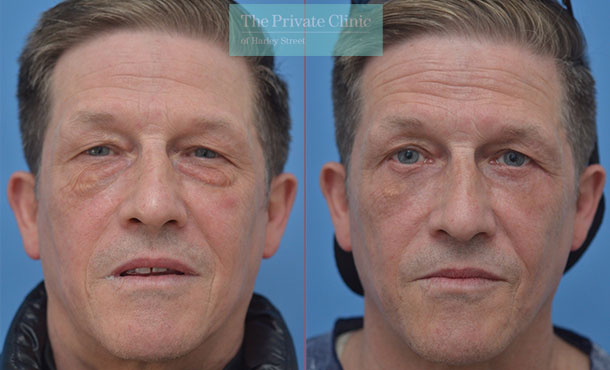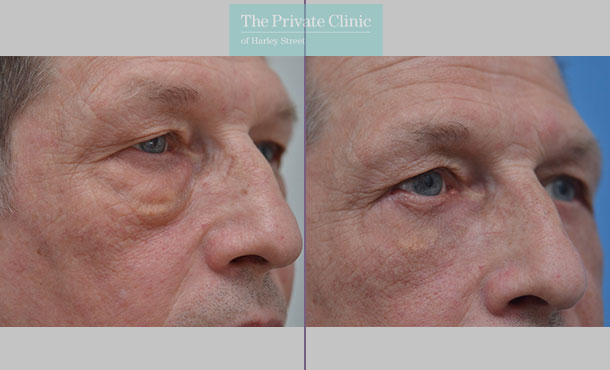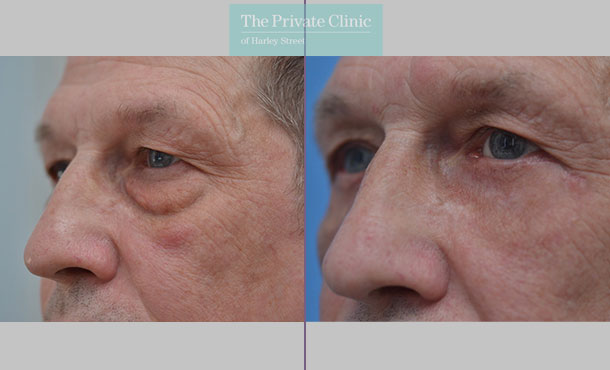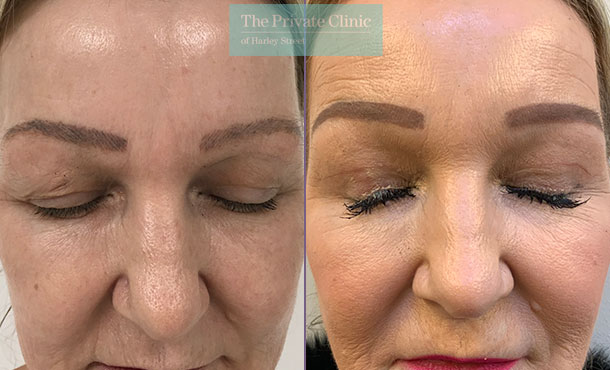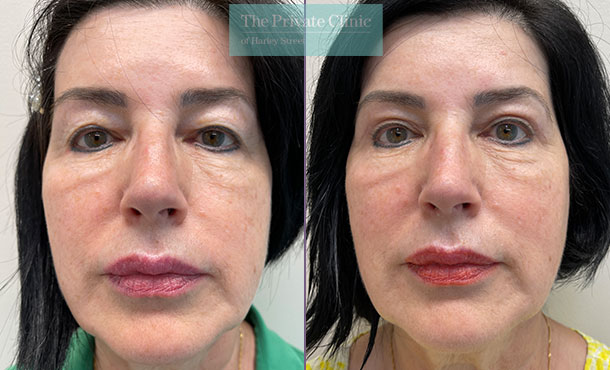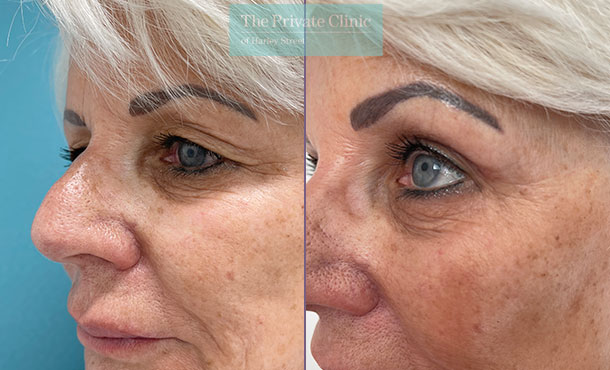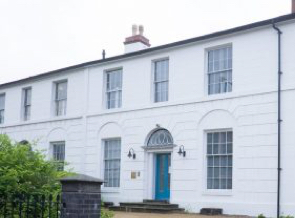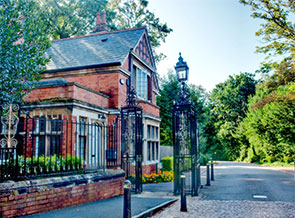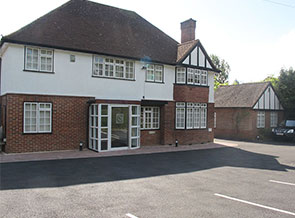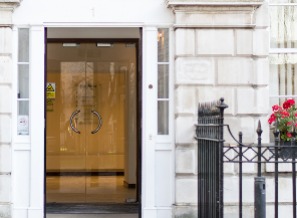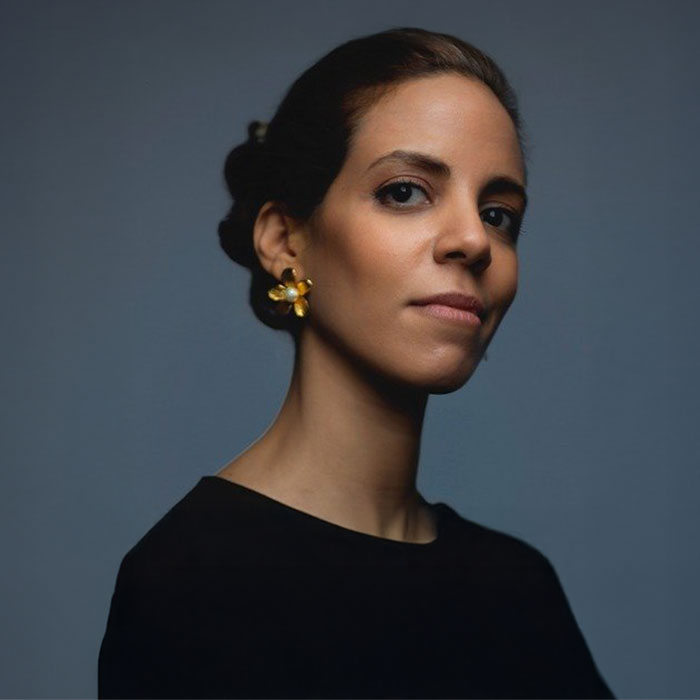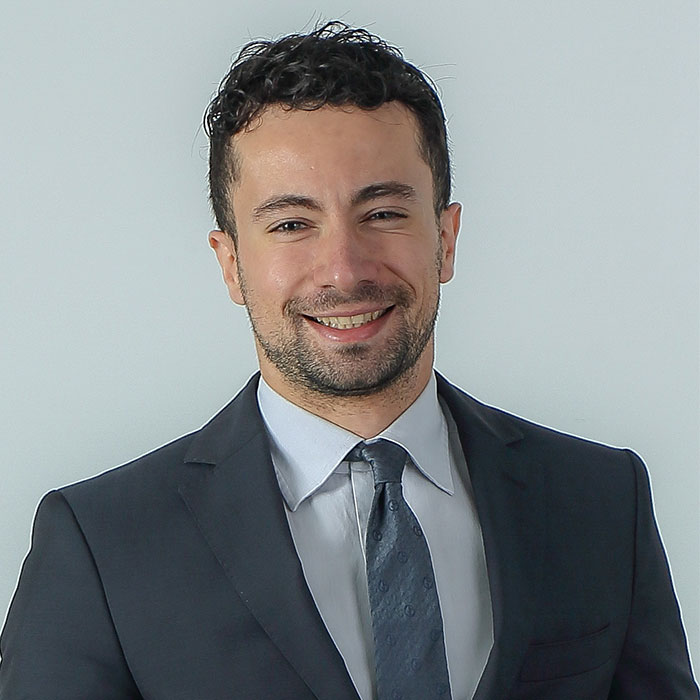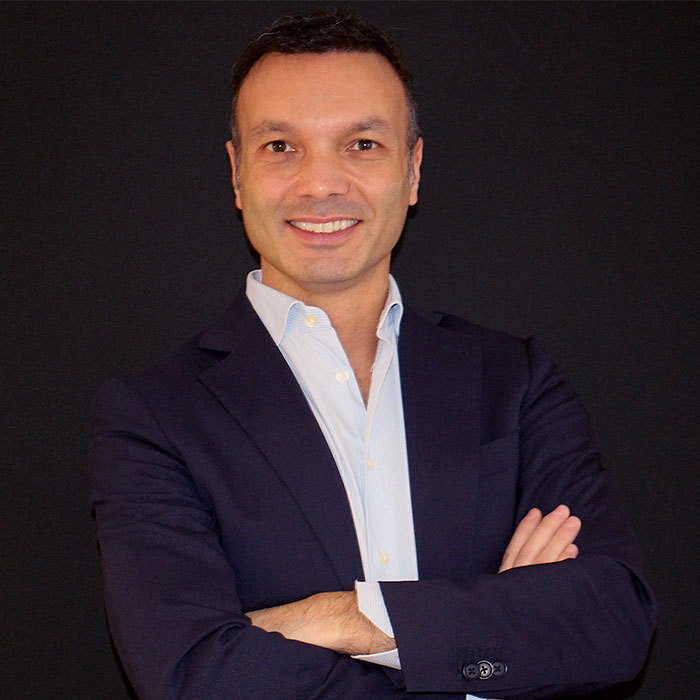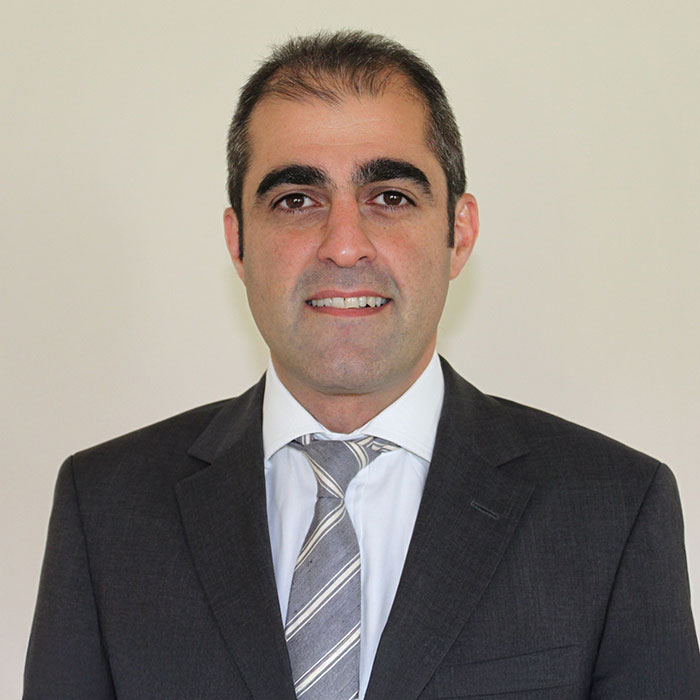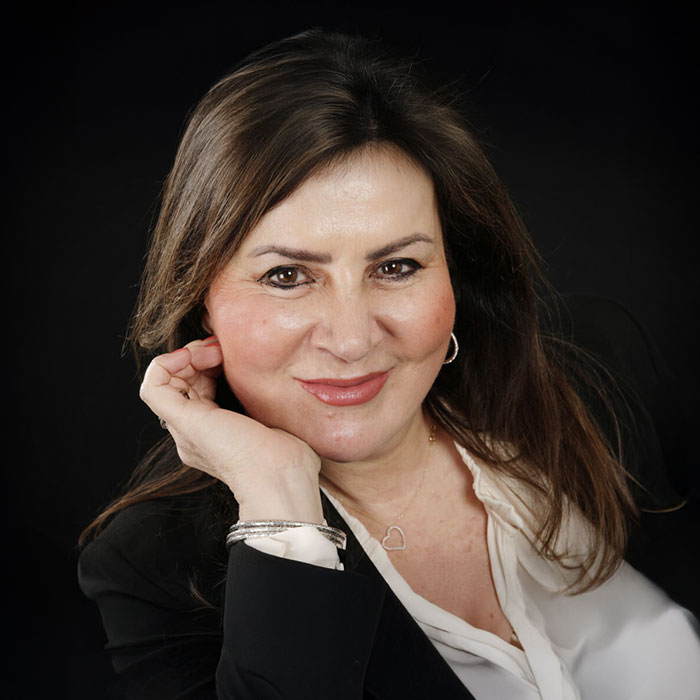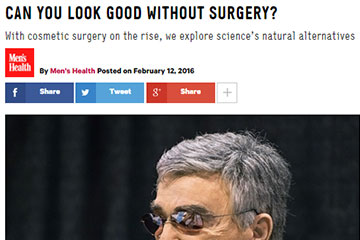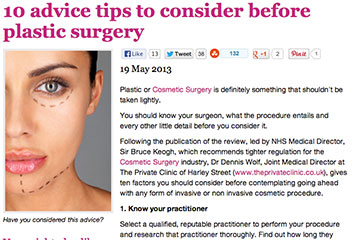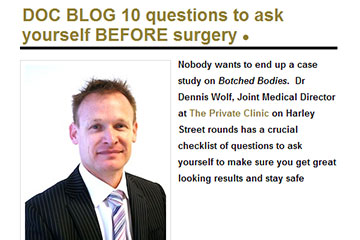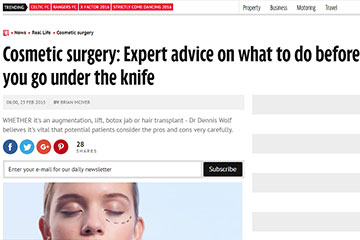
- Eyelid Reduction Surgery with expert Plastic Surgeons
- Eyes look younger and more alert
- Performed under local anaesthetic
- 0% Finance Available
What’s on this page
- About this Treatment
- Before & After Photos
- What to Expect
- FAQs
- Our Clinics
- Things to Consider
- Patient Stories
- Why the Private Clinic
- Meet the Surgeons
- Related Blogs & News
Medically reviewed by Lorcan Sheppard BSc MBBS FRCA, Chief Medical Officer for The Private Clinic of Harley Street, London.
Last Reviewed July 24th 2024
Related Cosmetic Surgery
Eyelid Reduction (Upper Blepharoplasty)
At The Private Clinic, our Cosmetic Surgeons have been successfully carrying out blepharoplasty procedures for decades. The results often take 5 to 10 years off a person’s face.
Upper Blepharoplasty, sometimes known as eyelid lift surgery, is a simple, safe and quick procedure to remove excess skin from around the eyes.
While other types of blepharoplasty can address the under-eye area, an upper blepharoplasty solely affects the upper eyelid. You may consider this procedure for aesthetic reasons or because your eyelids feel heavy and uncomfortable.
Upper eyelid surgery may be used to:
- Reduce drooping eyelids or hooded eyelids
- Tighten any creases and folds in the upper eyelids
- Correct visual impairments caused by saggy upper eyelid skin
- Achieve a fresher and more youthful appearance
Eyelid Reduction at a glance
Procedure Time
1 hour
Hospital Stay
Day case
Anaesthetic Type
Local anaesthetic, general for lower
Support Garments
None
Washing
1 – 2 weeks
Driving
1 week
Up & Mobile
Immediately
Sexual Activity
4 weeks
Back to Work
1 week
Exercise
1 – 2 weeks
Travel
6 weeks
Sleeping
Elevated on back for 1-2 weeks
Full Recovery Time
4 – 6 weeks
Final Results
2 – 3 months
Types of Eyelid Surgery
We all have different needs and wants, which is why your eyelid surgery will always be tailored to you. Depending on the nature and severity of your excess eyelid skin, you may need either upper, lower, or combined blepharoplasty, and the procedures differ in terms of their process and recovery.
Patient Review
Patient Marina shares her Upper Blepharoplasty results after 3 months.
Ask us a question
Blepharoplasty Before & After Photos
Our Plastic Surgeons will work alongside you to help you achieve your goals.
Simply book a consultation today to hear about the best options available for you.
What to Expect
The Private Clinic has been treating patients for over 40 years with thousands of people placing their trust in us each year. We pride ourselves on being able to offer a personalised service. We have a team of friendly nurses and expert surgeons who understand the importance of this decision and will support you throughout your journey with us.
The Consultation
The first stage of your upper blepharoplasty treatment journey will be a consultation with one of our expert surgeons.
At your consultation, your surgeon will go through the upper blepharoplasty procedure in detail and examine the areas that you are concerned about to assess your suitability for surgery.
Your surgeon will then discuss:
- Your medical history
- Your expectations from the surgery
- Risks and Complications of Blepharoplasty Surgery
- Aftercare
Following your consultation, you will be introduced to your dedicated patient coordinator who will be your point of contact should you wish to proceed with upper blepharoplasty surgery.

Pre-Operative Appointment
In the interests of patient safety, all our patients are assessed against our patient selection criteria. Following your upper blepharoplasty consultation and review of your past medical history, the physician or pre-operative nurse will select which pre-operative tests are required, most of which are routine blood tests.
They will also advise you of any precautions you need to take in the days or weeks leading up to your eyelid surgery procedure and advise on any medication that you should stop taking ahead of your procedure.

Eyelid Surgery
An upper blepharoplasty or eyelid surgery is typically carried out within our in-clinic theatres.
Local anaesthetic will be administered to the eyelid to numb the area so no pain is felt during the procedure. In some cases, a general anesthetic may be used which will be discussed with your surgeon.
An incision is then made in the skin fold that runs across the eyelid. Excess skin and fatty tissue is removed from the area. The surgeon will reshape the eyelid and close the incision with fine sutures.
The procedure can take an hour to perform. Following your procedure, you will be provided with detailed information on how to care for your eye/s following the upper blepharoplasty procedure. Patients will be able to leave once the surgeon is happy with their immediate recovery post-procedure.
Augmentation Blepharoplasty (Fat Transfer)
Historically, a strip of muscle was removed during an upper blepharoplasty procedure. This was to help further define the eyelid crease. This is not a technique that we favour anymore as over time this creates an aged look. One of the tell-tale signs of an elderly eye is hollowing, this is called an ‘A frame deformity’. Therefore, skin is only removed from the eyelid to preserve the volume that is present. Many surgeons request to see old photographs to decide if any hollowing has occurred, and if so, they may also suggest fat transfer. Also known as augmentation blepharoplasty, this technique can help to restore youthful volume, as well as removing redundant extra skin from the area.
The procedure involves taking fat from your thighs, buttocks, lower back or abdomen. The extracted fat is then spun on a centrifuge to separate the best fat cells for the procedure. It will then be injected back into the upper eyelid area.
This is a larger procedure and will need to be carried out within our surgical facilities under local anaesthetic or local anaesthetic with sedation.
Combined Upper and Lower Blepharoplasty
If the patient requires a combined Upper and Lower Blepharoplasty procedure, then a lower blepharoplasty procedure will be performed at the same time as your upper blepharoplasty procedure.
An upper blepharoplasty involves removing excess skin and fat from the lower eye area through an incision made within the lower eyelash line or inside the lower lid.
This slightly more complex technique will often require a general anaesthetic.

After your upper blepharoplasty
Immediately following your upper blepharoplasty procedure you can expect to experience some mild pain or discomfort as the local anaesthetic wears off, you surgeon will advise on the best type of pain medication to take to help keep you comfortable.
Thin paper bandaging strips will be placed along the eyelid crease for around 2 weeks to support the healing of the incision.
Swelling is common following eyelid surgery but usually settles after a week. Bruising only typically occurs in people who knowingly bruise easily. We recommend cool gel packs to help with swelling.
An appointment will be made for 1 week after your surgery to remove your stitches and assess how you are healing.
Most patients can return to work 1 week following their procedure. This will, however, depend on the nature of your work and your healing rate. If you work in a particularly dusty or strenuous environment this may need to be extended or precautions made to ensure your eyelid can heal safely.
Our surgeons always use extreme precision along the natural folds of your eyes to prevent scarring and ensure a recovery that is as quick as possible.
Results from your blepharoplasty procedure can be seen after 2-3 months, your incision may still appear red at this stage and it can take up to a year for them to heal fully so that they are barely visible.

Reviews
Upper Blepharoplasty FAQs
Frequently Asked Questions
An experienced surgeon will need to assess you prior to any procedure, but upper blepharoplasty is suitable for most people who are suffering with hooded, drooping or puffy eyelids. A lower blepharoplasty is ideal for patients who have lower eye drooping with signs of excess skin or prominent lower eye bags.
A combined upper and lower blepharoplasty may be recommended if the patient is experiencing both upper and lower eye drooping.
The procedure will not be suitable for those looking to rid of crow’s feet or some fine wrinkles. Your surgeon will be able to advise on other options like wrinkle injections or fillers.
A blepharoplasty is suitable for both male and female patients.
The best way to find out if upper, lower, or combined eyelid surgery is right for you is by scheduling a consultation with one of our expert surgeons today to learn more.
Most of our patients are day cases, with simple procedures taking as little as 30 minutes and longer cases taking up to 2 hours. The majority of patients return home after the procedure with no need for a hospital stay.
Incisions for an upper blepharoplasty or eyelid surgery are made in the natural crease of the upper eyelid.
Incisions for a lower blepharoplasty or eyebag surgery are made underneath the eyelashes or alternatively inside the eye.
Incisions for blepharoplasty procedures heal well and are rarely noticeable once healed following your procedure.
Eyelid/Eyebag surgery is performed under local or general anaesthetic so you will not feel anything during the procedure.
A few hours after the procedure your eyes may feel a little uncomfortable but you will be given painkillers to help with this and any discomfort usually settles after 48 hours.
Blepharoplasty surgery is not designed to treat wrinkles around the eyes as it’s primary focus. The results of your treatment may include a reduction in the appearance of wrinkles but if this is your main concern, it would be more beneficial to seek an alternative treatment.
Wrinkles around the eyes are best treated with wrinkle relaxing injections or laser rejuvenation treatments such as Regenlite.
Find out more about treating crows feet and eye wrinkles here.
Eyelid Reduction is Available in these Clinics
Things to Consider
Our advice on what to consider when deciding to have an eyelid reduction procedure:
1. When choosing a clinic, you should always do your research, and only go to an established, reputable clinic.
The Private Clinic has been in the cosmetic surgery industry for over 40 years. We are here to answer all of your questions and give you peace of mind.
2. When choosing a surgeon, make sure you know who you’ll be seeing. Their expertise, qualifications and patient satisfaction rate are important factors to take into consideration.
At The Private Clinic, we only source the most experienced and specialised surgeons. Find out more about our plastic surgeons here.
3. Price should never be the deciding factor when choosing where to have your treatment. Safety should be your number one priority and feeling confident that they will look after you – not only before, but also after your procedure
4. When it sounds too good to be true, it often is. Always find out what your clinic’s reputation is.
Our excellent reputation for patient safety and satisfaction, honest advice and outstanding care means your journey with The Private Clinic will be an exciting experience to a newfound shape.
Blepharoplasty Patient Stories
Outstanding care, patient satisfaction and results mean everything to The Private Clinic Team
“The Private Clinic took really good care of me and I have been very pleased with the results, I would certainly recommend them”
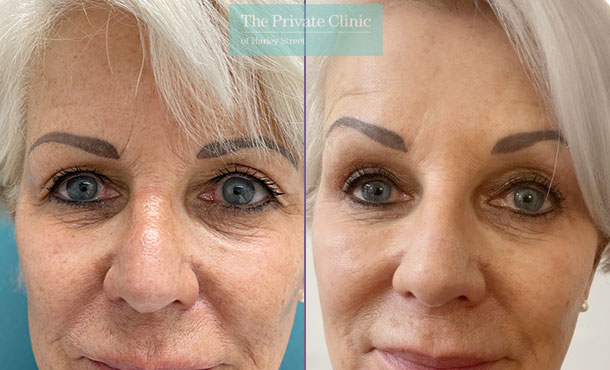
Blepharoplasty – Lisa
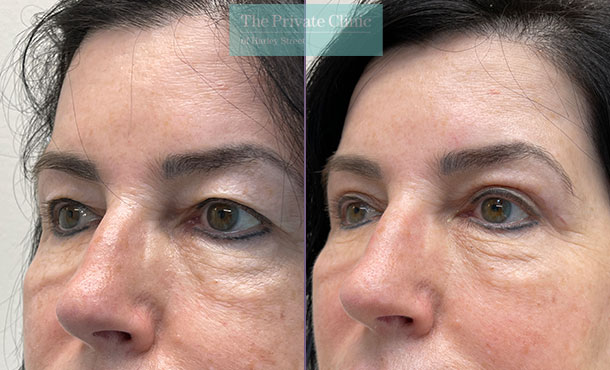
Blepharoplasty – Bernadette

Blepharoplasty – Deborah
Why Choose The Private Clinic
- The Private Clinic are a multi-award-winning Cosmetic Surgery provider with over 40 years’ experience.
- We have world-class top specialist surgeons.
- We have clinics and consultation rooms across the UK.
- We see over 15,000 new patients every year performing over 10,000 procedures.
- We have one of the highest patients’ satisfaction rates; Trustpilot 5 star rating.
- 98% of patients would recommend us to their friends and family.
- Dedicated care with your expert facial surgeon and nursing team including a 24-hour help line.
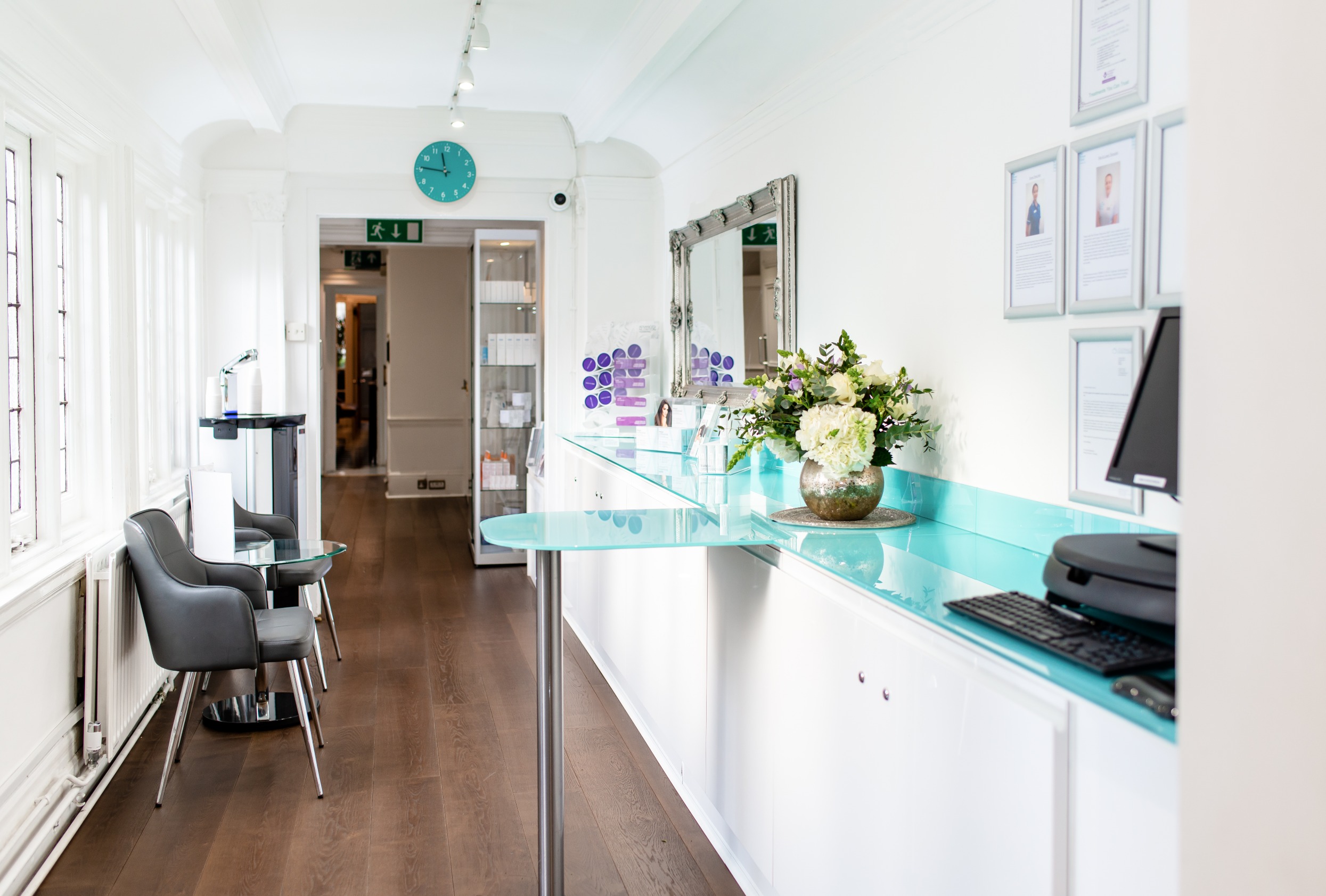
Meet our Surgeons
We have a dedicated Plastic Surgeon and medical team who will be with you throughout your journey.
At The Private Clinic, eyelid surgery is performed by some of the UK’s top consultant plastic surgeons who have decades of experience.
Consultant Plastic, Reconstructive & Aesthetic Surgeon
Consultant Plastic & Reconstructive Surgeon
Consultant Plastic Surgeon





